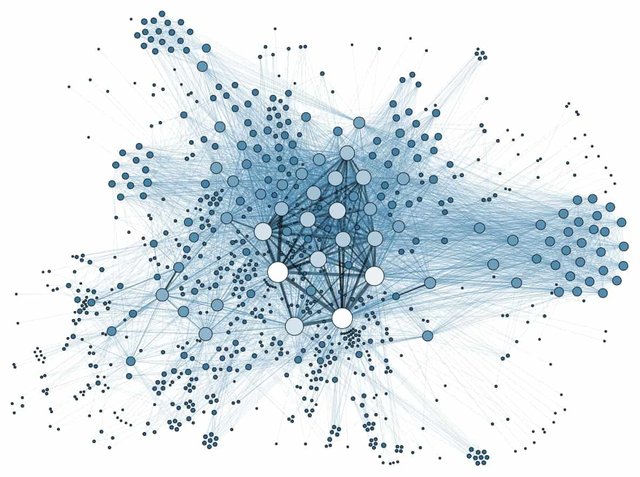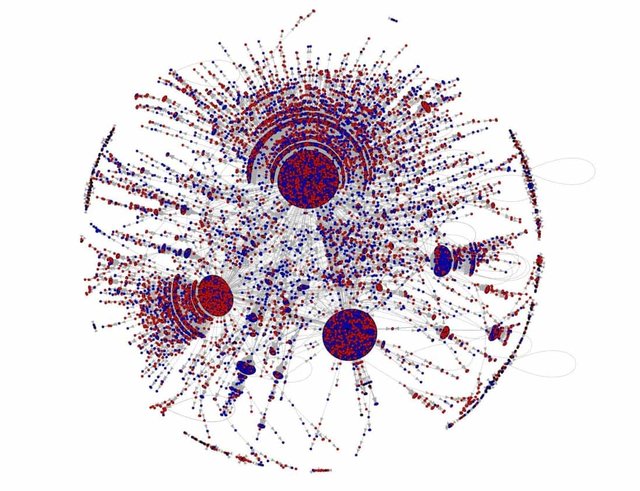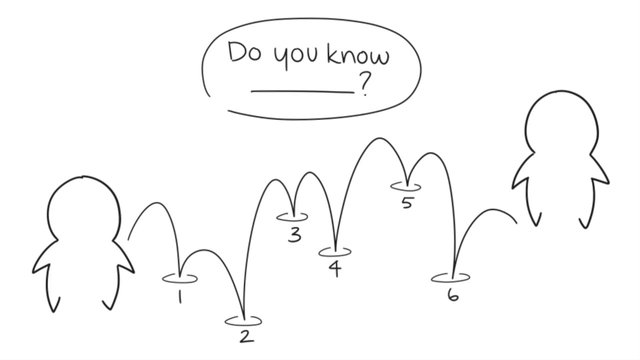The big network of a small world
One of the most fascinating theories we took inspiration from in order to create Charax theoretical model is the small world theory. It describes the relative proximity of two or more people, independently from the geographic distance that separates them. In order for this to happen, it is necessary to create or allow the birth of a social network that has a enough nodes to put in touch every one. Briefly, with a certain number of people sharing their relationships it is possible to connect every person in the world.
Greeting the humanity with six handshakes
The world is small
It's one of the most famous quotes of common use, often used to express the surprise of meeting someone we share some friends with, sometimes we share a close friend or we are linked by a chain of connections. The distance that separates one person from another on this imaginary chain of connections is called separation degree. In a social network this distance never takes more than seven people, with an average of six. From this constatations the six separation degrees theory is born, firstly formulated by the hungarian writer Frigyes Karinthy in his work “Chains”, of which we report a statement:
Let’s see it this way: relatively talking, the earth has never been so small as it is now. What shrined it was the more and more fast verbal and physical communication [...] Anyone, on this planet, can know in little time what I am doing or thinking, what i want o will want. And if i want to know it directly, in few days, few jumps, i can get where i want.
In another statement the writer describes with simple words how he could have linked himself with any workman in charge of the assembly chain of the Ford Motor Company.
With 4 steps i found the end of the chain. “The workman knows his boss, who knows Mr. Ford, who is in good relationships with the general director of the Hearst publishing indusrty. The last one, last year, was able to know mister Árpád Pásztor that is a good friend of mine.
The game of packages
The first one to try the small world theory on an empiric basis was the psychologist Stanley Milgram, who in 1967 selected a casual number of inhabitants of the USA Midwest asking them to send a package in Massachusetts, thousands of miles away. Senders knew the name of the addressee, his job and his home area, but not his precise address. Their objective was to send the package to someone they knew and that had to be the closest possible to the selected addressee. Who received the package had to do the same until the package went to the final addressee. His first formulation supposed hundreds of mediums, but surprisingly the average of medium was always six.

E-package
Thirty-four years later, in 2001, the researcher Duncan Watts, with the arrival of the Internet, recreated the Milgram experiment using e-mails. Similar to the older one, the experiment consisted in sending a package from 48.000 senders to only 19 addressees in 157 different states. After an analysis Watts found that the number of mediums was, in fact, six. His research largely contributed to the analysis of computer and electronic networks, the spreading of diseases, graph theory and telecommunication.

Friends of my friends
Duncan Watts has not only the credit of reproposing Milgram’s experiment, but even to have formulated a model that analyzes behaviours of relationships between elements of a social network. In simpler words, with his model it is possible to describe the movements of social relationships in a community, will it be formed by close friends or acquaintances. Even though the model Watts-Strogatz was not created for this purpose, it is an unseful tool to study social networks beacuse, under certain parameters - in this context called β -, it could provide a random graph of the behaviour of social human relationships.

In reality
Just to mention some, Facebook and Linkedin use the Watts–Strogatz model for their algorithms, showing how the six separation degrees have thinned thanks to a powerful cohesion tool such as social networks. In a study performed in collaboration with the University of Milan, Facebook demonstrated that the separation degrees of its users are around 3.5. There is to highlight an important detail: social network friendships don’t always coincide with real relationships, creating a new kind of medium, less perceivable of a real one, but still existent. In the article concerning Charax social and eonomic model, assumed that the presence of mediums pushes people to take the distances one from the other, threathening the fundations of the social graph. That is why we have the purpose to push people closer for real, with the aim of reducing the separation degrees to one, creating a decentralized network that finally unifies the whole humanity.
Charax.io seems to be a great mean to keep up with society in an era where computers are our medium with reality. Keep up the good work you are doing!!
Congratulations @charax! You have completed the following achievement on the Steem blockchain and have been rewarded with new badge(s) :
Click here to view your Board of Honor
If you no longer want to receive notifications, reply to this comment with the word
STOPDo not miss the last post from @steemitboard: